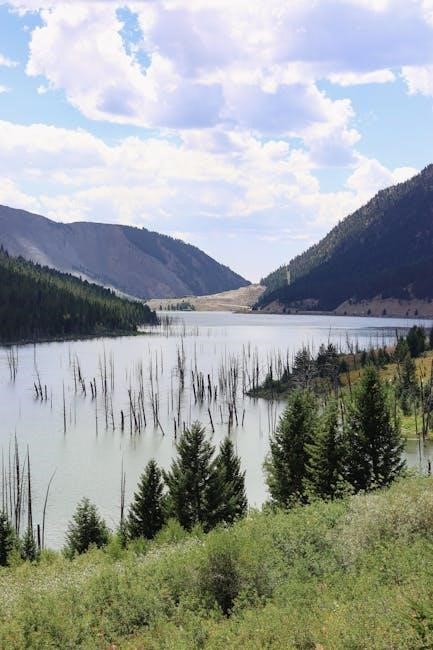A drying log is a critical tool for documenting water damage restoration processes, ensuring transparency and efficiency. It tracks moisture levels, equipment usage, and progress, adhering to industry standards like ANSI/IICRC S500, to verify the effectiveness of drying efforts and support insurance claims. Proper documentation helps in making informed decisions and preventing future damage.
Understanding the Importance of Drying Logs
Drying logs are essential for water damage restoration as they document the entire drying process, ensuring compliance with industry standards like ANSI/IICRC S500. They track moisture levels, equipment usage, and progress, providing transparency and accountability. Logs help verify drying effectiveness, support insurance claims, and ensure materials are restored safely. Proper documentation prevents disputes and guarantees adherence to best practices, while also aiding in future damage prevention by identifying vulnerabilities. Regular updates ensure all stakeholders are informed and aligned throughout the restoration process.
Role of Drying Logs in Water Damage Restoration
Drying logs play a vital role in water damage restoration by providing a detailed record of the drying process. They ensure compliance with industry standards like ANSI/IICRC S500 and serve as legal documentation for insurance claims. Logs track moisture levels, equipment usage, and progress, ensuring transparency and accountability. They also help identify when materials can safely be deemed dry or if replacement is necessary. This documentation is crucial for verifying the effectiveness of restoration efforts and supporting decisions throughout the recovery process.
Key Components of a Drying Log
A comprehensive drying log includes essential details such as moisture readings, equipment usage, and daily progress. It should document the type and brand of moisture meters used, along with their settings and the data collected. The log also records the HVAC system status, drying goals, and any adjustments made. Additionally, it includes a moisture map and notes on containment measures. These components ensure a thorough and organized record, facilitating effective communication and compliance with industry standards like ANSI/IICRC S500.
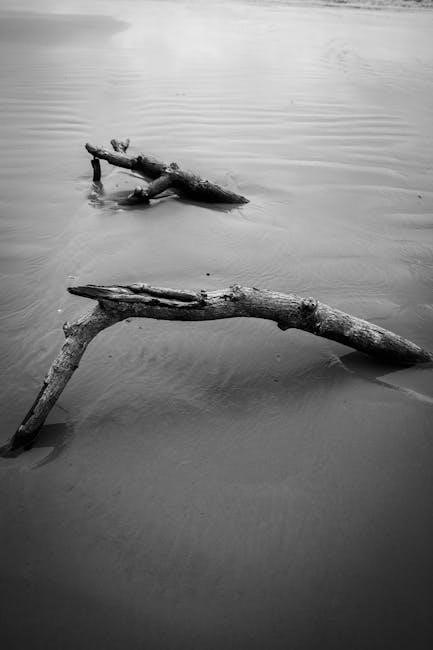
The Science Behind Drying Logs
The science involves psychrometry, evaporation, and condensation principles, measuring moisture levels to track drying progress. It ensures materials return to safe conditions, preventing further damage.
Psychrometry and Its Role in Drying
Psychrometry is the study of air and moisture interactions, crucial for drying processes. It involves measuring temperature, humidity, and dew point to determine optimal drying conditions. By understanding psychrometric principles, professionals can assess how moisture moves through materials and air, ensuring efficient evaporation. This science guides the use of dehumidifiers and air movers, helping restore materials to safe moisture levels. Accurate psychrometric data is recorded in drying logs, enabling precise monitoring and adjustments for successful water damage restoration.
The Drying Process: Evaporation and Condensation
The drying process relies on evaporation, where water transforms from liquid to vapor, and condensation, where vapor turns back into liquid. Evaporation is accelerated by increasing temperature and airflow, while condensation is managed using dehumidifiers to prevent moisture buildup. These processes are critical for effectively drying water-damaged materials. Drying logs track moisture levels, ensuring materials return to safe conditions. Proper management of evaporation and condensation is essential for preventing secondary damage and achieving restoration goals efficiently.
Importance of Moisture Measurement
Moisture measurement is vital for assessing and documenting the drying progress of water-damaged materials. Accurate readings ensure materials are safely dried to prevent further damage or mold growth. Moisture meters provide precise data, which is recorded in drying logs to track progress and adjust equipment as needed. Regular monitoring guarantees that drying goals are met efficiently, reducing risks and ensuring the restoration process is both effective and documented according to industry standards.
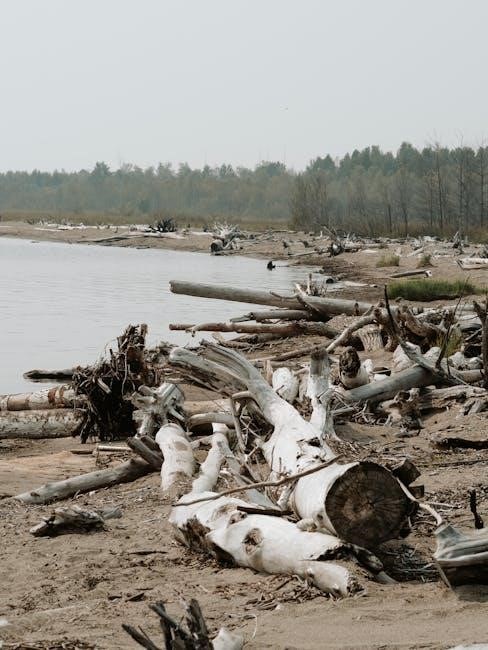
Types of Water Damage and Their Impact
Water damage is categorized into three types: clean, grey, and black water, each varying in contamination levels and restoration complexity. Understanding these types is crucial for effective mitigation and drying strategies.
Category 1: Clean Water Damage
Category 1 water damage involves clean, non-contaminated water, such as from burst pipes, rainwater, or appliance malfunctions. It poses minimal health risks but requires prompt action to prevent escalation. Moisture levels must be monitored closely, and drying procedures should begin within 48 hours to avoid mold growth. Examples include water from a sink overflow or a leaking roof. The primary goal is to dry affected materials quickly to restore safety and functionality. Proper documentation of the process is essential for insurance claims and compliance with restoration standards.
Category 2: Grey Water Damage
Category 2 water damage involves contaminated water that poses health risks, such as from dishwashers, washing machines, or toilet overflows. It requires immediate attention to prevent mold growth and further contamination. Drying logs must document the extent of damage, cleaning efforts, and disinfection processes; Grey water can degrade to Category 3 if left untreated. Restoration professionals must use specialized equipment and follow safety protocols to ensure a safe environment and prevent long-term structural issues. Timely action is critical to mitigate risks and restore affected areas effectively.
Category 3: Black Water Damage
Category 3 water damage is the most severe, involving unsanitary sources like sewage, floods, or stagnant water. It poses significant health risks due to bacteria, viruses, and contaminants. Immediate action is required to contain the damage, disinfect surfaces, and remove saturated materials. Drying logs must detail the extent of contamination, cleaning processes, and equipment used. Restoration professionals must wear PPE and follow strict safety protocols to prevent exposure. Materials exposed to black water often require replacement to ensure a safe and healthy environment. Timely intervention is crucial to avoid prolonged risks and structural instability.

Equipment and Tools for Drying Logs
Essential tools include dehumidifiers to reduce moisture, air movers for enhanced evaporation, moisture meters for precise readings, and thermal imaging cameras to detect hidden moisture, ensuring efficient drying processes.
Dehumidifiers: Types and Functions
Dehumidifiers are crucial for water damage restoration, reducing moisture in the air to prevent further damage. They come in types like refrigerant-based and desiccant models, each suited for different environments. These units lower humidity, accelerating evaporation from surfaces and materials. Proper placement and monitoring ensure optimal performance, adhering to IICRC standards. Regular maintenance and drainage are essential to avoid water accumulation, ensuring efficient drying and preventing mold growth. They are vital for achieving drying goals outlined in restoration plans.
Air Movers: Enhancing Evaporation
Air movers, also known as industrial fans, are essential tools for accelerating the evaporation process in water-damaged areas. By circulating large volumes of air, they increase the rate of moisture removal from surfaces. Strategically placing air movers ensures uniform drying, reducing the risk of mold growth and structural damage. These devices are particularly effective in areas with high humidity or limited airflow. Regular monitoring and adjustment of air movers are crucial to achieve optimal drying results and prevent secondary damage during restoration projects.
Moisture Meters: Accurate Readings
Moisture meters are vital tools for measuring the moisture content in materials, ensuring accurate readings during water damage restoration. They help assess damage severity, identify hidden moisture, and monitor drying progress. By documenting these readings in drying logs, professionals can track changes over time and adjust strategies. Different types, such as pin and pinless meters, cater to various materials like wood and drywall. Accurate moisture measurement prevents over-drying, ensures structural integrity, and confirms when materials are safe for reuse, making meters indispensable for effective restoration efforts.
Thermal Imaging Cameras: Detecting Hidden Moisture
Thermal imaging cameras are essential for detecting hidden moisture in water-damaged structures, allowing professionals to identify areas not visible to the naked eye. These cameras visualize temperature differences, highlighting wet spots in walls, floors, and ceilings. By integrating thermal imaging results into drying logs, restoration teams can document moisture presence, track progress, and ensure thorough drying. This technology accelerates inspections, reduces guesswork, and prevents mold growth, making it a valuable asset in efficient water damage restoration processes and ensuring structural safety.
Creating a Comprehensive Drying Plan
A comprehensive drying plan outlines strategies for water damage restoration, including containment, equipment setup, and moisture monitoring to ensure efficient drying and prevent further damage.
Initial Assessment and Damage Containment
The initial assessment identifies the extent of water damage, categorizing it into primary or secondary damage. Containment involves extracting water, removing wet materials, and isolating affected areas to prevent further harm. Moisture meters and thermal imaging cameras are used to detect hidden moisture. Containment steps include moving contents to dry areas, drilling wet wall cavities for drying systems, and cutting openings for ventilation. Proper containment ensures efficient drying and prevents mold growth. Documenting these steps in a drying log is crucial for transparency and insurance purposes. Timely action is essential, as delays can lead to irreversible damage.
Setting Drying Goals and Objectives
Setting clear drying goals and objectives is essential for effective water damage restoration. Goals should be based on moisture meter readings, industry standards like ANSI/IICRC S500, and the material’s dry standard. Objectives include achieving safe moisture levels, preventing mold growth, and restoring materials to their pre-damage state. Drying goals should be realistic and time-bound, considering factors like material type and ambient conditions. Properly defined objectives ensure the drying process is systematic, measurable, and aligned with restoration best practices. Documentation in drying logs helps track progress and validate outcomes.
Monitoring and Adjusting the Drying Process
Continuous monitoring is crucial to ensure the drying process remains on track. Regularly check moisture levels using meters, adjust equipment as needed, and update drying logs with detailed records. Adjustments may involve repositioning air movers, increasing dehumidifier capacity, or extending drying time. Monitoring helps identify inefficiencies and prevents over-drying, ensuring materials return to their dry standard. Documentation in drying logs provides a clear audit trail, supporting insurance claims and verifying compliance with industry standards like ANSI/IICRC S500. Adjustments should be data-driven and aligned with predefined drying goals.
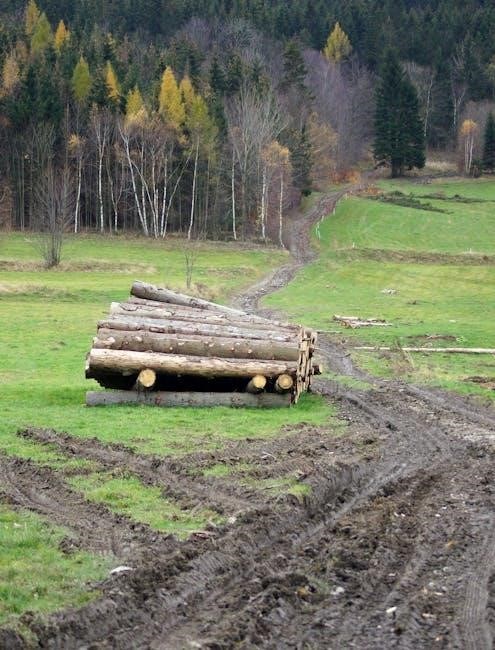
Documenting the Drying Process
Accurate documentation ensures transparency and accountability, detailing moisture levels, equipment usage, and progress. Drying logs are updated regularly, providing a clear record for insurance and future reference.
Recording Moisture Levels and Equipment Usage
Systematically recording moisture levels and equipment usage is vital for monitoring progress and ensuring accountability. Moisture meters and thermal imaging cameras provide precise data, which is logged regularly. Equipment such as dehumidifiers and air movers is documented, including operational hours and settings. This detailed record helps verify adherence to industry standards like ANSI/IICRC S500. Daily logs are maintained to track moisture reductions, ensuring the drying process aligns with established goals. Accurate documentation supports insurance claims and provides a clear audit trail for all stakeholders involved.
Tracking Progress and Adjustments
Regularly tracking progress ensures the drying process stays on course. Moisture levels and equipment performance are monitored daily, with adjustments made as needed. Drying logs document these changes, providing a clear record of how moisture is being managed. Adjustments may include repositioning air movers or increasing dehumidifier capacity. This iterative process ensures the environment stabilizes efficiently. Detailed records help verify that drying goals are met, and any unforeseen issues are addressed promptly to prevent further damage and ensure structural integrity is restored.
Final Inspection and Clearance
The final inspection involves verifying that all materials have reached their dry standard, ensuring no residual moisture remains. This step is crucial for preventing future mold growth and structural issues. Clearance is granted only when drying goals are fully achieved, and the area is deemed safe. Documentation from the drying log is reviewed to confirm compliance with industry standards and procedures. A thorough inspection ensures the restoration meets required benchmarks, providing assurance of a successful outcome and allowing the property to be returned to its original condition.
Safety Precautions and Best Practices
Wear PPE to avoid exposure to contaminants. Ensure proper ventilation to prevent mold growth. Avoid electrical hazards and slip risks. Regularly inspect equipment for safe operation. Maintain a clean work environment to prevent further damage and ensure compliance with safety standards.
Personal Protective Equipment (PPE)
Using PPE is crucial for safety in water damage restoration. This includes gloves, respirators, and eyewear to protect against contaminants and mold. Ensure proper fit and compliance with industry standards to prevent exposure risks. PPE helps safeguard technicians from harmful substances, reducing health risks. Always inspect equipment before use and maintain cleanliness to prevent cross-contamination. Proper PPE usage is essential for a safe and effective drying process, aligning with best practices in the restoration industry.
Avoiding Electrical and Slip Hazards
Water damage sites pose electrical and slip hazards, requiring careful navigation. Keep equipment away from water sources to prevent shocks. Use GFCI-protected outlets and test circuits before use. Ensure floors are clear of water and debris, using caution signs to alert others. Regularly inspect equipment cords for damage. Proper lighting and secure footing are essential to minimize risks. Documenting these safety measures in drying logs helps maintain a safe working environment and ensures compliance with safety protocols throughout the restoration process.
Preventing Mold Growth During Drying
Mold growth is a significant concern in water-damaged environments, thriving in moisture-rich conditions. To prevent it, maintain low humidity using dehumidifiers and ensure proper airflow with air movers. Regularly monitor moisture levels and adjust drying equipment as needed. Clean and disinfect surfaces, especially porous materials, which may harbor mold spores. Documenting these preventive measures in drying logs helps ensure a mold-free restoration process and protects the structure from further damage, aligning with industry standards for effective and safe water damage restoration practices.
Case Studies and Real-World Applications
Real-world examples demonstrate how drying logs effectively track water damage restoration progress, ensuring compliance with industry standards and providing transparency for stakeholders like insurance companies and clients.
Residential Water Damage Restoration Example
A residential case involved a flooded basement due to a burst pipe. Drying logs documented moisture levels, equipment usage, and daily progress. Moisture meters and thermal imaging cameras identified hidden moisture in walls and floors. Dehumidifiers and air movers were deployed to accelerate evaporation. The drying process, initiated within 48 hours, was completed in 72 hours, preventing mold growth. The log ensured compliance with ANSI/IICRC S500 standards, providing a clear record for insurance claims and verifying the property’s safe restoration.
Commercial Water Damage Restoration Example
A commercial water damage case involved a flooded office building due to a roof leak during heavy rain. Drying logs were used to track moisture levels, equipment performance, and progress. Dehumidifiers, air movers, and thermal imaging cameras identified hidden moisture in walls and ceilings. The drying process, initiated within 48 hours, was completed in five days, preventing mold growth. The log ensured compliance with ANSI/IICRC S500 standards, providing a detailed record for stakeholders and verifying the building’s safe restoration for occupancy.
Lessons Learned from Drying Log Analysis
Analyzing drying logs reveals critical lessons for effective water damage restoration. Timely initiation of drying processes within 48 hours is crucial to prevent mold growth and secondary damage. The use of dehumidifiers and air movers significantly reduces drying time, while moisture meters and thermal imaging cameras ensure accurate detection of hidden moisture. Tracking adjustments in drying strategies helps refine future restoration approaches. Additionally, maintaining detailed records supports insurance claims and ensures compliance with industry standards, ultimately leading to safer and more efficient restoration outcomes.
Preventing Future Water Damage
Regular inspections, prompt leak repairs, and improving structural integrity are essential to prevent future water damage, ensuring properties remain safe and dry long-term.
Regular Inspections and Maintenance
Regular inspections are crucial for identifying potential water damage risks early. Check plumbing systems, gutters, and roofs for leaks or blockages. Maintain appliances and ensure proper drainage to prevent water accumulation. Inspecting materials like drywall for moisture can help detect issues before they escalate. Regular maintenance, such as sealing cracks and ensuring proper ventilation, reduces the likelihood of water damage. Documenting these efforts in a drying log can provide a record of proactive measures taken to safeguard the property.
Repairing Leaks and Vulnerabilities
Addressing leaks promptly is vital to prevent water damage escalation; Fixing damaged pipes, caulking gaps, and replacing worn-out seals can mitigate risks. Inspect areas prone to moisture, such as bathrooms and kitchens, for vulnerabilities. Sealing entry points and ensuring proper drainage systems function efficiently are key steps. Documenting repairs in a drying log helps track progress and ensures all issues are resolved, reducing future water damage incidents and promoting a safer environment.
Improving Structural Integrity
Ensuring structural integrity post-water damage is crucial for long-term stability. Assess weakened areas, such as rotting wood or compromised foundations, and reinforce them with durable materials. Use treated wood for repairs and apply waterproof coatings to vulnerable surfaces. Strengthening structural elements prevents further damage and enhances safety. Regular inspections and adherence to industry standards, like ANSI/IICRC S500, ensure effective restoration. Documenting these steps in a drying log provides a clear record of structural improvements, supporting future maintenance and insurance claims.
Drying logs are essential for effective water damage restoration, ensuring compliance with industry standards and providing clear documentation. They guide future trends, enhancing restoration practices and outcomes.
Drying logs are vital for water damage restoration, ensuring systematic documentation of moisture levels, equipment usage, and progress. They comply with industry standards like ANSI/IICRC S500, providing transparent records for insurance claims and stakeholder communication. Logs help set realistic drying goals, track adjustments, and verify the effectiveness of restoration efforts. Proper documentation supports accountability and informed decision-making, while also preventing future damage by identifying vulnerabilities. Regular updates and detailed entries ensure a comprehensive overview of the restoration process from start to finish.
Importance of Proper Documentation
Proper documentation in drying logs ensures transparency and accountability throughout the water damage restoration process. It provides a clear record of moisture levels, equipment usage, and progress, which is essential for insurance claims and stakeholder communication. Detailed logs help verify compliance with industry standards and support informed decision-making. Consistent documentation also aids in identifying patterns and potential issues, ensuring a thorough and efficient restoration. Accurate records protect against disputes and demonstrate professionalism, making them indispensable in water damage recovery projects.
Future Trends in Water Damage Restoration
Future trends in water damage restoration emphasize technological advancements, such as advanced moisture detection tools and AI-driven drying systems. The integration of thermal imaging and data analytics will enhance precision in moisture mapping and drying processes. Increased adoption of digital documentation, like drying logs, will streamline communication and compliance with industry standards. Sustainability will also play a role, with eco-friendly drying methods and energy-efficient equipment gaining prominence. These innovations aim to improve efficiency, reduce costs, and minimize environmental impact in restoration projects.

Resources and References
Key resources include ANSI/IICRC S500 standards, moisture meters, and drying log templates. These tools aid in effective water damage restoration, ensuring compliance and precise documentation.
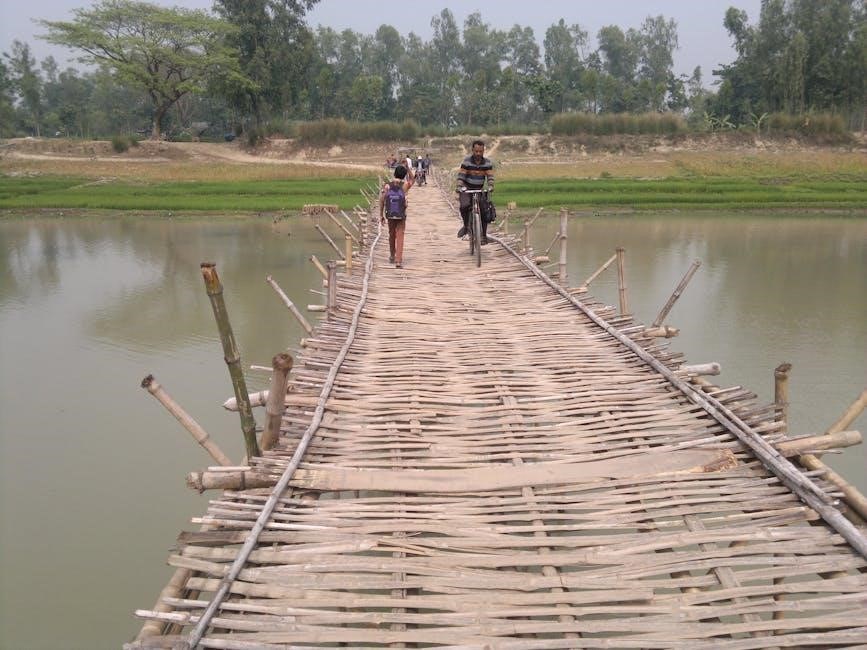
Recommended Reading and Guides
For comprehensive insights, refer to the ANSI/IICRC S500-2021 Standard, which outlines professional water damage restoration practices. Additionally, the Drying Logs for Water Damage PDF guide provides detailed templates and moisture tracking tools. These resources offer practical steps for documenting and executing effective drying processes, ensuring adherence to industry standards and enhancing restoration efficiency. They are essential for professionals seeking to optimize their workflows and maintain precise records.
Industry Standards and Certifications
The ANSI/IICRC S500-2021 Standard is the benchmark for water damage restoration, emphasizing proper documentation and drying protocols. Professionals must adhere to these guidelines to ensure effective and safe restoration practices. Certifications like WRT (Water Restoration Technician) and ASD (Advanced Structural Drying) validate expertise in using tools like drying logs. Compliance with these standards ensures quality and accountability, making them indispensable for industry professionals aiming to deliver superior restoration services and maintain credibility.
Useful Tools and Software
Moisture meters and thermal imaging cameras are essential for accurately assessing water damage and monitoring drying progress. Drying log templates, available in PDF and MS Word formats, streamline documentation. Software like restoration management platforms helps track moisture levels, equipment usage, and progress. These tools enhance efficiency, ensure compliance with industry standards, and provide clear records for insurance claims and client reporting. Utilizing these resources ensures a systematic approach to water damage restoration and drying processes;
